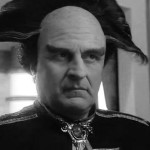- 23 Mar 2010 01:29
#13351124
For a while, the Germans had the best fighter in the world: the fast, rugged, powerful (four 20mm cannon!) Focke-Wulf 190. The Fw-190d9 (aka "Dora", aka Fw-290, powered by the Jumo V12) might be the best piston-engined fighter of the war. It couldn't turn with a Mustang, but was faster, about equally armored, and had tremendous firepower (2x13mm MG, 4x20mm cannon). It could top 40,000', and could actually run down a Mosquito running flat-out. They wiped the floor with Spitfire V's in Africa...not until the Spitfire IX, the P-47C, and the later Mustangs showed up were they matched.
The Me262 should have been operational by January of 1943...spring 1943 at the latest.
The PzIV was probably the best overall German tank of WW2. It was the ONLY tank used in combat from the first day of the war to the last, and was built in about ten different variations just as a TANK, not even mentioning the various different uses the chassis was put to. One could make a pretty good argument that the PzIIIF2/IIIG was one of the first true Main Battle Tanks.
The PzIII was good, but being limited to the high-velocity 50mm L/60, while producing a pretty good tank (the PzIII-J), meant it couldn't keep up with the need for more firepower. It was the first German tank able to handle a Matilda II on better than even terms and could, more or less, fight an early T-34 on even terms (especially with APCR ammunition).
The Me262 should have been operational by January of 1943...spring 1943 at the latest.
The PzIV was probably the best overall German tank of WW2. It was the ONLY tank used in combat from the first day of the war to the last, and was built in about ten different variations just as a TANK, not even mentioning the various different uses the chassis was put to. One could make a pretty good argument that the PzIIIF2/IIIG was one of the first true Main Battle Tanks.
The PzIII was good, but being limited to the high-velocity 50mm L/60, while producing a pretty good tank (the PzIII-J), meant it couldn't keep up with the need for more firepower. It was the first German tank able to handle a Matilda II on better than even terms and could, more or less, fight an early T-34 on even terms (especially with APCR ammunition).
--------------------------------------------------------------------------
I know that I will never be politically correst
And I don't give a DAMN about my lack of etiquette...
--Jim Steinman
I know that I will never be politically correst
And I don't give a DAMN about my lack of etiquette...
--Jim Steinman











 - By Potemkin
- By Potemkin